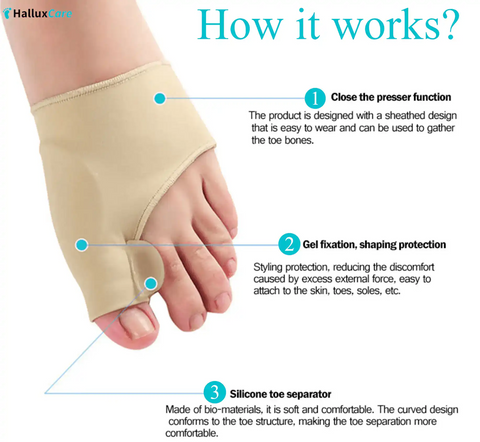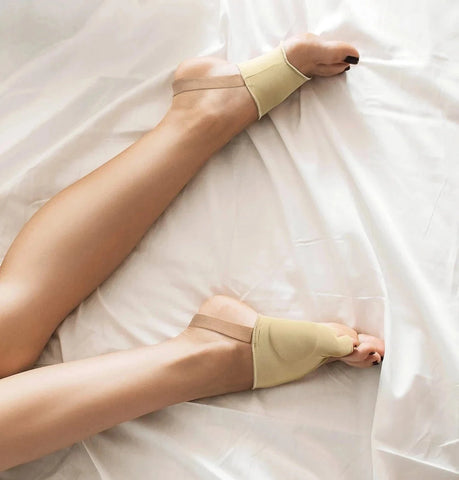Lapiplasty Revision Surgery: Reddit Stories, Bunion Surgery Failures & Your Next Steps
Last Updated: 2025-10-06
Author: Dr. Jamie Lin, DPM, Board-Certified Podiatric Surgeon
If you’re searching for bunion pain relief or weighing your options after a lapiplasty revision surgery, you’re far from alone. Many patients—like those sharing their stories on Reddit—face setbacks after bunion correction procedures. Understanding what constitutes a “failed” bunion surgery and knowing your next steps is crucial for lasting relief.
Real Reddit Story: Lapiplasty Revision Challenges
A Reddit user recently chronicled their bunion correction journey:
- Original Lapiplasty (4/2025): Persistent bump, bone shifted again.
- Revision Scheduled: Hardware broke before revision, removed during surgery (7/28).
- Results: Toe still curved, no post-op X-ray provided.
- Left Foot Surgery (8/2025): Toe remains curved with pin in place; X-ray doesn’t show straight alignment.
- Current Status: Ongoing discomfort, still in surgical shoe, unsure if surgery failed.
This real patient experience resonates with many seeking bunion pain relief after surgery—sometimes, results fall short despite best efforts.
Understanding "Failed" Bunion Surgery
Is my bunion surgery a failure? This is a common concern, especially after multiple procedures or persistent pain. According to the American College of Foot and Ankle Surgeons (ACFAS), surgical “failure” may include:
Key Signs of Bunion Surgery Failure
- Persistent or recurring bunion bump (ACFAS, 2024)
- Toe remains visibly curved (Mayo Clinic, 2024)
- Pain/discomfort continues post-surgery
- No improvement on X-ray or physical exam
- Hardware complications (breakage, loosening, infection)
If you’re experiencing any of these, it’s time to reevaluate your treatment plan.
Why Does Bunion Surgery Sometimes Fail?
Leading foot and ankle specialists cite several causes for unsatisfactory outcomes (PubMed, 2023):
- Surgical technique: No single procedure is right for every bunion.
- Bone quality: Osteoporosis or poor healing increases risks of hardware failure or bone shifting.
- Post-op care: Premature weight-bearing or inadequate protection can compromise results (American Orthopaedic Foot & Ankle Society, 2024).
- Individual anatomy: Certain foot shapes are more prone to recurrence.
What Should You Do If Bunion Surgery Fails?
Practical, evidence-based steps:
- Request updated X-rays: Imaging is essential to evaluate alignment and healing (ACFAS, 2024).
- Seek a second opinion: Consult a fellowship-trained podiatrist or orthopedic foot and ankle surgeon.
- Consider non-surgical options: Orthopedic bunion sleeves and custom orthotics can help manage pain and prevent progression (Cleveland Clinic, 2023).
- Assess your pain and daily function: Quality of life matters—document your symptoms and limitations.
4.9 ⭐⭐⭐⭐⭐ ( 1843 reviews)
Non-Surgical Bunion Relief: What Are Your Options?
If further surgery isn’t in your plans, or you want to delay additional procedures, conservative care can help.
Top Non-Surgical Bunion Treatments
- Orthopedic bunion sleeves: Gently realign the toe, reduce pressure, and relieve pain (Journal of Foot & Ankle Research, 2022).
- Custom orthotics: Redistribute pressure and improve gait (Cleveland Clinic, 2023).
- Ice/NSAIDs: Reduce swelling and inflammation after activity.
- Physical therapy: Strengthen intrinsic foot muscles, improve joint mobility.
- Proper footwear: Wide-toe shoes with good support prevent exacerbation (APMA, 2024).
When to Seek Another Medical Opinion
- Persistent pain or deformity after surgery
- No improvement after several months
- Hardware complications
- Feeling dismissed by your provider
A second (or third) opinion from a board-certified foot and ankle specialist can clarify your options for both surgical and non-surgical care.
Key Takeaways
- Bunion surgery may not always yield perfect results—even with advanced techniques like lapiplasty.
- Persistent pain, deformity, or hardware issues warrant further evaluation.
- Non-surgical options—including bunion sleeves and orthotics—can offer meaningful relief.
- Always request updated imaging and seek a second opinion if you’re dissatisfied with your outcome.
- Advocate for your health: your quality of life matters.
Practical Tips & Real-World Applications
- Document symptoms: Keep a pain diary and take photos of your foot’s progress.
- Bring questions: When seeing a new doctor, ask about all available treatment options.
- Trial orthotics/sleeves: Many patients notice reduced pain and better shoe comfort, even if surgery hasn’t fully corrected the bunion.
- Prioritize supportive shoes: Avoid high heels and narrow toe boxes to prevent worsening.
- Stay active: Gentle foot exercises can help maintain strength and flexibility.
Frequently Asked Questions (FAQs)
Q: How do I know if my bunion surgery failed?
A: Signs include persistent pain, a recurring bump, continued toe deviation, or hardware problems. Always confirm with X-rays and a thorough clinical exam.
Q: Can bunions come back after surgery?
A: Yes, recurrence rates depend on surgical technique, post-op care, and individual anatomy (Mayo Clinic, 2024).
Q: Are non-surgical treatments effective after failed bunion surgery?
A: They can reduce pain, slow progression, and improve function—but won’t “cure” the bunion.
Q: Should I get a second opinion?
A: If you’re experiencing unresolved symptoms or feel uncertain about your care, a second opinion is highly recommended.
Q: What should I bring to my revision surgery consultation?
A: Previous X-rays, operative reports, a list of symptoms, and any questions you have.
Final Thoughts: Your Bunion Journey
Bunion surgery, including lapiplasty, isn’t a guarantee—but you have options. Whether you’re considering revision surgery or exploring conservative care, advocate for yourself and seek support from knowledgeable providers.
Have you experienced a failed bunion surgery or found relief with non-surgical methods? Share your story in the comments—your experience could help others.
HalluxCare.com Bunion Products for Pain Relief
If you're looking for relief from bunion pain, consider using the Orthopedic Bunion Pain Relief & Correction Sleeve, which provides support and helps to alleviate discomfort.
For additional protection, the Tailor's Bunion Bunionette Pain Relief Protection Sleeves are designed to offer comfort and protection for bunionette pain.
To nourish and soothe the skin around bunions, as well as to promote healthy hair, consider the Jamaica Black Castor Oil Soothing Oil. Known for its moisturizing and anti-inflammatory properties, it helps alleviate discomfort around bunions and supports hair growth and scalp health.
References:
- American College of Foot and Ankle Surgeons (ACFAS): Bunions
- Mayo Clinic: Bunion surgery
- Cleveland Clinic: Bunions
- American Podiatric Medical Association: Foot Health
- American Orthopaedic Foot & Ankle Society: Bunion Surgery
- Journal of Foot & Ankle Research: Conservative management of bunions




